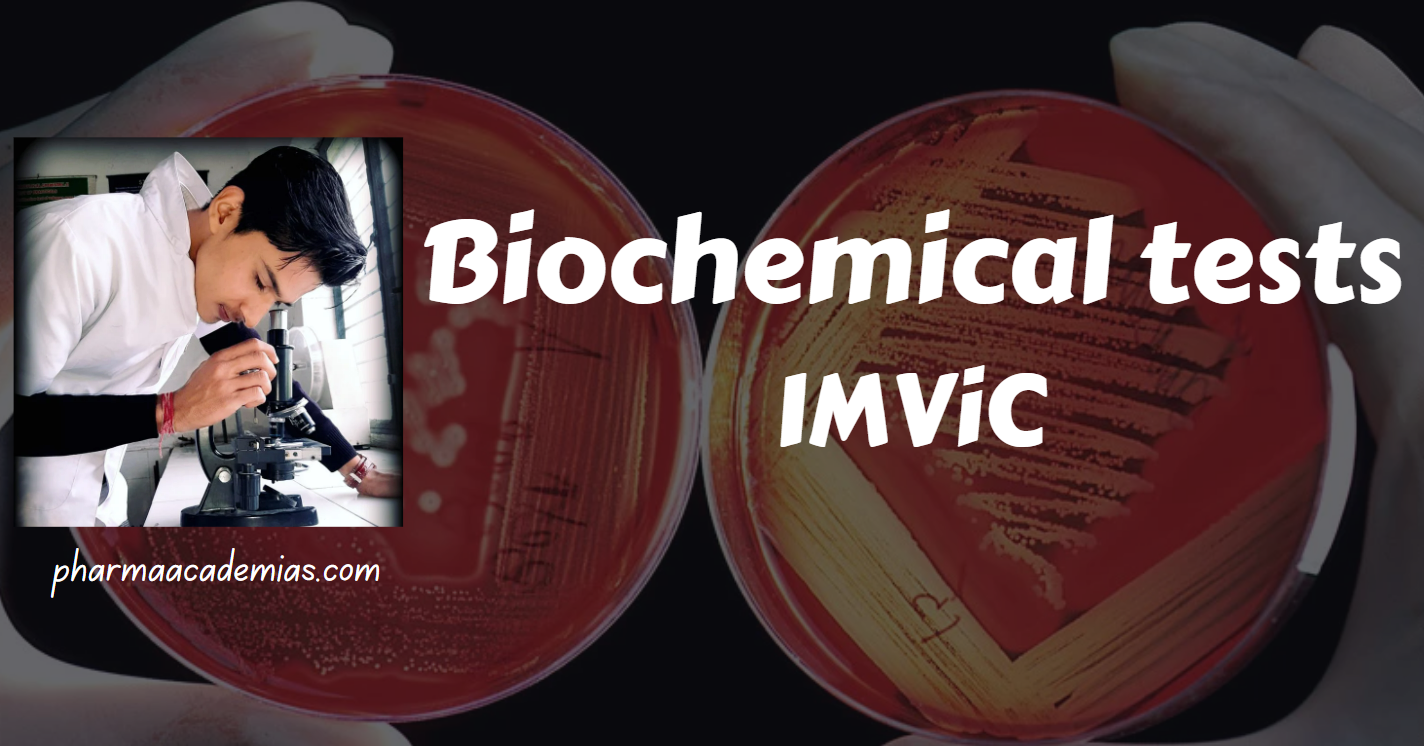Biochemical tests, specifically the IMViC tests, are four individual tests used to differentiate between members of the Enterobacteriaceae family of bacteria. These tests include Indole production, Methyl Red test, Voges-Proskauer test, and Citrate utilization. The IMViC tests are commonly employed in microbiology laboratories for identifying and classifying bacteria, particularly those belonging to the coliform group. Here is a detailed note on each of the IMViC tests:
Indole Test (I)
Purpose:
The Indole test determines the ability of bacteria to produce indole from the amino acid tryptophan.
Procedure:
1. Inoculate a tube of tryptone broth with the bacterial isolate.
2. Incubate the tube at 37°C for 24-48 hours.
3. After incubation, add Kovac’s reagent to the tube.
4. Observe the development of a red color at the top of the broth.
Interpretation:
– Positive Result: The development of a red color indicates indole production.
– Negative Result: No color change.
Methyl Red Test (M)
Purpose:
The Methyl Red test is used to determine the ability of bacteria to perform mixed acid fermentation of glucose.
Procedure:
1. Inoculate a tube of MR-VP broth with the bacterial isolate.
2. Incubate the tube at 37°C for 24-48 hours.
3. Add a few drops of Methyl Red indicator to the tube.
4. Observe for a red color.
Interpretation:
– Positive Result: The development of a stable red color indicates mixed acid fermentation.
– Negative Result: No color change or a yellow color.
Voges-Proskauer Test (V)
Purpose:
The Voges-Proskauer test is used to detect the production of acetoin, a precursor of 2,3-butanediol, by bacteria.
Procedure:
1. Inoculate a tube of MR-VP broth with the bacterial isolate.
2. Incubate the tube at 37°C for 24-48 hours.
3. Add alpha-naphthol and KOH to the tube, followed by shaking.
4. Allow the tube to stand for a specific period.
5. Observe for the development of a red color.
Interpretation:
– Positive Result: The development of a red color indicates acetoin production.
– Negative Result: No color change.
Citrate Test (C)
Purpose:
The Citrate test determines the ability of bacteria to utilize citrate as a sole carbon source.
Procedure:
1. Streak a Simmons citrate agar slant with the bacterial isolate.
2. Incubate the slant at 37°C for 24-48 hours.
3. Observe for the growth of bacteria and a change in the color of the slant.
Interpretation:
– Positive Result: Growth and a change in the color of the slant to blue indicate citrate utilization.
– Negative Result: No growth or color change.
Significance of IMViC Tests
1. Identification of Coliform Bacteria:
– The IMViC tests are particularly useful in differentiating coliform bacteria, which are members of the Enterobacteriaceae family commonly found in the intestines of warm-blooded animals.
2. Clinical Diagnostics:
– These tests are valuable in clinical laboratories for identifying bacteria associated with urinary tract infections and other clinical conditions.
3. Quality Control in Food and Water Testing:
– IMViC tests play a role in assessing food and water quality by identifying coliforms, which can indicate fecal contamination.
4. Industrial Microbiology:
– The tests are applied in industrial settings, such as the pharmaceutical industry, to identify bacteria associated with manufacturing processes.
Limitations
1. Interpretation Variability:
– Interpretation of test results may vary, and some organisms may exhibit atypical results.
2. Confirmation Required:
– In some cases, additional confirmatory tests may be needed for accurate identification.
The IMViC tests are biochemical tests that provide valuable information for identifying and classifying bacteria, especially within the Enterobacteriaceae family. These tests are widely used in clinical, environmental, and industrial microbiology settings. Interpretation of the results requires careful consideration, and the tests are often part of a comprehensive approach to bacterial identification.

